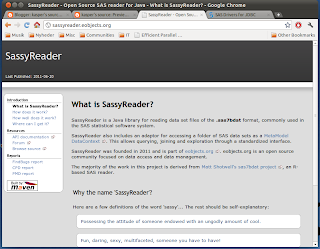Today has been all about the release of DataCleaner 2.2. This is a significant release of our Data Quality Analysis product which I think is becoming more and more mature and capable.
One of the really neat things in DataCleaner 2.2 is it's extensibility. Lots of applications are extensible, but few are in my oppinion as easy to approach as DataCleaner. We expose a limited API which is extremely flexible though. This makes it easy for developers to explore the opportunities and the architecture.
Another great strengths of DataCleaner's extension architecture is the ExtensionSwap. With a click in the browser you can install an extension onto a running application. Personally I think it's a quite jaw-dropping effect when you see the seamlessnes of the integration here.
I've recorded this webcast demonstration for developers who want to get started, or just feel curious on how our developer API works.
Also, a few nice resources for you to investigate further:
- Our reference documentation now contains a "developers guide" with lots of nice info on extension packaging and more.
- The Develop page on the website contains links to various previous blog entries and instructions. These are still valid even though the 2.2 API has been elaborated.
- And of course, check out the javadoc API documentation for DataCleaner.
Lastly I want to point out that not only is DataCleaner 2.2 extensible, it is also embeddable. You can now grab DataCleaner in the central Maven repo's and you can bootstrap the application in a really easy fashion:
BootstrapOptions bootstrapOptions = new DefaultBootstrapOptions(args);
Bootstrap bootstrap = new Bootstrap(bootstrapOptions);
bootstrap.run();
For more info, check out the chapter "Embedding DataCleaner" in the reference documentation.
